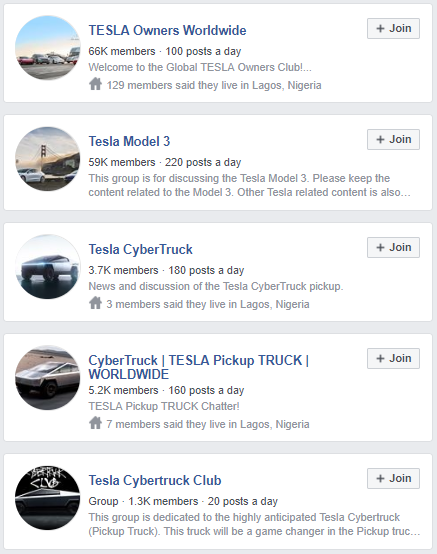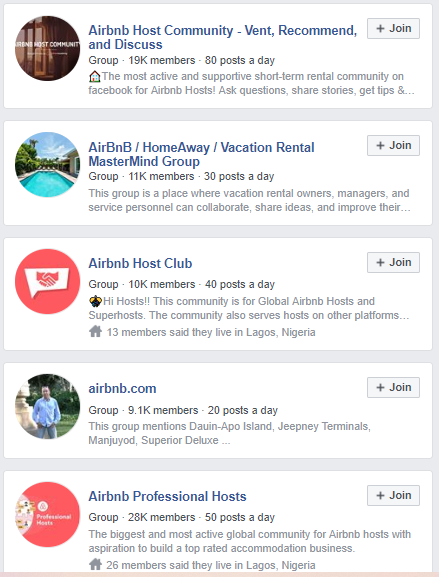
How to increase engagement in Facebook groups: An actionable guide for brands
What are Facebook groups and why are they important for brands
Back in 2017, Facebook groups emerged as a vital element in Facebook's overarching mission to "bring the world closer together." Distinguishing themselves from Facebook Pages, which are designed for businesses and brands to promote their products or services, Facebook Groups are meant for people with similar interests to connect with each other. As of 2022, over 10 million groups were on Facebook, with over 1.8 billion people using them each month. It's worth noting that more than half of all users actively participate in five or more groups.
Businesses have typically focused on creating engaging content on their Facebook business pages while ignoring groups. Since Facebook's organic reach is going down, it takes a lot of work to drive high levels of engagement. However, Facebook groups provide an untapped opportunity for businesses to attract new customers and engage in meaningful customer relationships.
This piece examines in depth why brands need to pay more attention to Facebook groups and use it as a powerful marketing tool. We also provide some ideas on how brands can improve customer engagement on Facebook.
Why Facebook groups should be a key part of your social media strategy
1. Organic reach is dwindling and channel diversification is important
Organic reach on Facebook ads and from Pages has been in steady decline since 2014 due to fierce competition for the prime real estate of the News Feed.
Fast forward to 2018, Facebook made the "shift to make News Feed more about connecting with people and less about consuming media in isolation." Now, content from friends and family are more likely to show up on a user’s feed than content from brands. Brands need to diversify the channels where they can reach and connect with customers, and groups are another way to do that beyond business Pages.
When we talk about groups, we are talking about community. In the real world, businesses are part of the community. - Alex Himel, VP of Product & Engineering at Facebook
2. Interactions are becoming more private
User conversations are gradually shifting away from public channels into private channels in WhatsApp, Messenger, and Groups. Facebook’s Mark Zuckerberg confirms this shift in a blog post titled “A Privacy-Focused Vision for Social Networking” published in March. In his words, "a privacy-focused communications platform will become even more important than today's open platforms."
In essence, brands that ignore these shifting dynamics are potentially missing crucial signals from their audiences, and valuable engagement and feedback opportunities from their customers.
3. If you don’t create a Facebook group, others will create it
Anybody can create a Facebook group. There are millions of Facebook groups - many of Facebook’s 2.45 billion users belong to at least one group. For an established brand, there’s a high chance that there are hundreds of Facebook groups dedicated to its products or services.
If you don’t create Facebook groups around your brand, other people will create them. Why not take the lead in creating groups where your customers can connect? Take Tesla, for instance - you’ll find hundreds of Facebook groups for different Tesla cars and in different locations.

The same is true for Airbnb.

If your brand is new, you have the opportunity to set the pace by creating groups around your products and services. Peloton is one of the companies using groups to power customer engagement activities. Its Official Peleton Member Page group gives Peloton Bike, Tread, and Digital Members the latest news about the brand. In the last four years, the group has grown to have more than 213,000 members who generate more than 400 posts each day.
Creating official groups doesn't stop other people from creating other groups around your brand. If there are existing groups, you may want to consider joining them. Some brands might be interested in acquiring ownership and control of such groups but Facebook’s TOS prohibits the buying and selling of group accounts.
There is still value in joining user-generated groups. By being part of these groups, you’ll have the chance to connect with the members of those groups and point them to your official brand Facebook group. Of course, you’ll need to be nuanced in how you direct people to the official Facebook group, but there’s a decent chance that users will typically want to get updates from a reliable and official source.
4. Groups allow you to tap into the power of community for specific customer segments
Groups become especially powerful when your customers are in very specific segments and have shared interests that they are deeply passionate about -parents of young children, pet owners, beautyholics, gamers, or geeks. You can leverage the sense of community that Facebook Groups provide to drive increased customer engagement on Facebook.
Facebook groups are a great tool for creating different communities for different customer segments. Rover.com, a 2-sided marketplace that connects pet owners with pet sitters, is one example of a brand utilizing groups to reach a specific customer segment. Its Rover.com Sitters Group is focused on providing news, support, and updates to its Sitters and Walkers.
The segmentation of the group around Sitters and Walkers makes sense because the company needs to build a strong community of sitters and walkers to deliver on its promise as a brand. The group of Sitters and Walkers is thriving with more than 6,000 members who have made a combined 2,180 posts in the last month. Since the Facebook group already engages the supply side of its business, Rover.com then focuses its RoverDotCom Facebook page predominantly on pet owners.
vCita, which offers business management and client management solutions designed for small businesses, uses its Facebook page to post content that might be interesting to business owners in general.
However, its New vCita Features group allows it to provide exclusive updates on upcoming features to existing vCita customers. It's also where feature requests or user-specific questions are entertained. vCita takes the sense of exclusivity further by requesting intending members to verify that they are a vCita user.

How you can grow your Facebook group engagement: step by step
In the past, brands could be part of what goes around in groups if their employees joined such groups. Now, Facebook has released features that enable Pages to join groups, regardless of who manages the groups. This means brands can now have an official presence in groups around their products and services.
1. Build a reputation for responsiveness
Joining Facebook groups could provide opportunities for brands to provide official perspectives on the discussions going on in the group. For instance, brands can leverage their presence in groups to recommend products and services when group members ask for recommendations. Also, brands could extend the reach of their customer service to respond promptly and to direct such conversations to private channels where necessary. Such official engagements help the brand develop a reputation for responsiveness, which in turn encourages customers to engage actively with the brand.
44% of consumers think that 1-on-1 brand conversations with customers are more persuasive than the brand’s advertising message.
Source: Edelman. (2018). Trust Barometer Special Report: Brands and Social Media.
2. Develop an effective customer insight strategy
Beyond actively engaging with group members, being present in a group could provide valuable insights into developing trends about what customers expect from your brand. When you have insights into what customers want, it then becomes much easier to proactively improve your marketing communications.
Ernest Hemingway once said, “If a writer stops observing, he is finished. Experience is communicated by small details intimately observed.” Likewise in business, it is important for marketing professionals to pay attention to their customers.
Watching from the sidelines could provide brands with valuable insights into customers’ habits, behaviors, frustrations, and desires. Such insights could then help in measuring the strength of a brand’s relationship with its customers and to drive innovation for improving engagement across marketing channels.
3. Leverage Watch Parties to foster interactions around videos
Video has always been an important tool for advertisers and marketers. The only challenge was getting a massive enough audience to view a video and interact with each other and the brand in real-time. With the Watch Party feature now open to Facebook groups, brands can easily get their audience to watch a video together on Facebook in real-time. Interestingly, Facebook reports that Watch Party videos in groups have recorded eight times more engagement than regular non-live video posts.
Increasingly, many brands are starting to pay attention to the potential value in Watch Parties. Facebook reports that the number of Watch Parties in groups has been increasing 7X since July 2018. The WWE exemplifies the potential in Watch Party for groups with the re-airing of its WWEMixed Match Challenge as a Watch Party in its Facebook group for international fans who are unable to see the live games.

Buzzfeed also leveraged the power of Watch Party to drum up interest in the new season of its “Worth It” web series. By hosting Watch Parties with content from the previous series, it reengaged the previous viewers while attracting new viewers.

Watch Party brings group members together around video for shared experiences. You can also use live Watch parties to host Q&As around your brand or share behind the scenes details of your business.
4. Use different post options for more variety
For smaller brands, the different post options in groups might provide a more engaging way to connect with customers. Apart from the default “Write Something” status updates, you can use “Get Recommendations” to get the input of group members on matters that concern the brand. For example, if you want to grow an e-commerce site focused on selling baby-related products, you could ask parents in your group about favorite baby websites and blogs. Their recommendations could give you ideas on where to place your ads.
The “Sell Something” post allows you to list products/services for sale. You can provide pricing, location, and a description of the sale. However, you may want to use this feature sparingly since the idea behind Facebook groups is to foster community and not to bore people with sales messages.
Summary
A Facebook group helps you to humanize your brand by giving you a chance to engage users without necessarily coming off as promotional. You'll be able to empathize with your customers and get a pulse on what your most ardent supporters think.
Interestingly, new features such as Facebook Group Insights provides data about the state of the group in three categories.
- Growth: Tracking the increase/decrease in new members and group membership requests.
- Engagement: Measuring the volume of posts, comments, and reactions in the group. It also shows the best times for member engagement as well as the top-ranking posts by engagement.
- Membership: Shows data on the top contributors in the group. It also shows demographic data about the composition of the group.
Going forward, Facebook groups will become increasingly important as a place for customer and prospect interactions. The interactions, in turn, create strong connections between the brand and its customers who then become passionate fans. Passionate fans drive your WoM (word of mouth) marketing, they defend your brand when people attack or criticize it, and they essentially form a unified tribe around your brand.
With all the changes in the social media landscape, we think there are a lot of opportunities for brands to be more intentional about using groups to drive customer engagement on Facebook.
